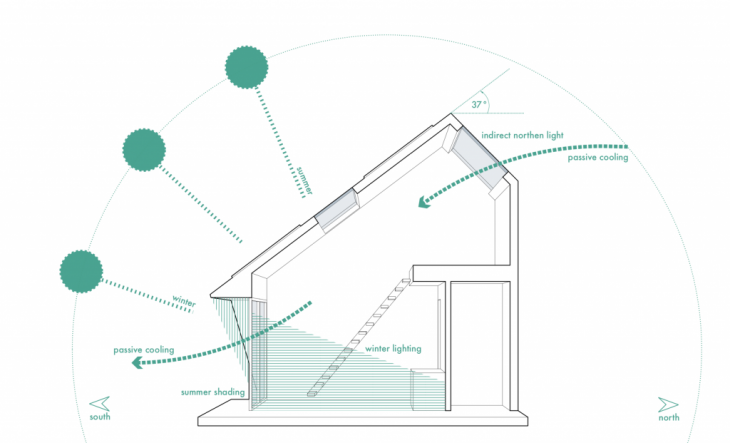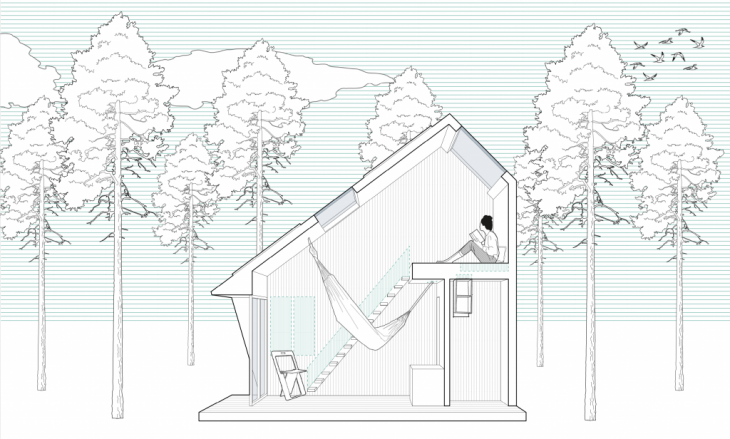
In the age of the COVID-19 pandemic, million of people are confined to their homes. This prompted us to reconsider the living space, looking to our physical and mental wellbeing. With this in mind, how the interior architecture would be affected at the domestic scale?
The solution may lie into the minimum unity of life: the living cell. As self-sufficient organism, the cell is able to take nutrients and convert them into energy, maintaining itself and adapting to the external and internal stimuli. This characterizes it as an autopoietic system, able to renew itself by regulating its composition and conserving its boundaries.

This research is inspired by the cell as an autopoietic system. The “Living cell house” is a primary structural membrane that contains the fundamental task and space that compose basic living. It is an evolving dynamic functional system that is responsive to the ever-changing needs of people. Within the structural walls, the interior is a sequence and superposition of spaces with their material qualities, versatile enough to accommodate a multitude of creative activities where the user decides; the architecture does not impose, it creates a constant dynamic interior that empowers the user to wander around, and self-accommodates to its needs.
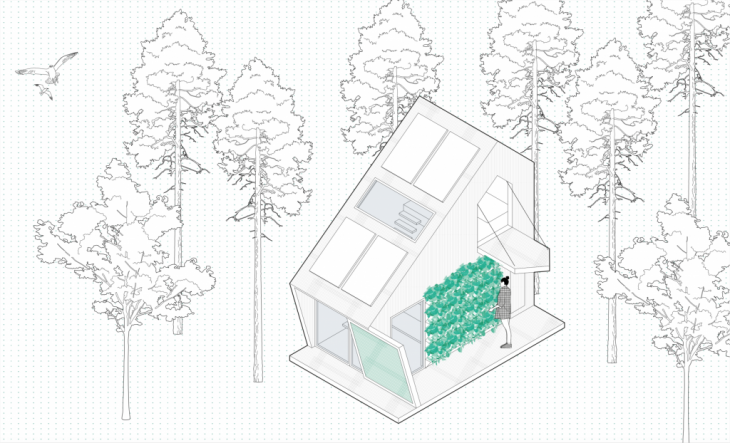
Body-based architecture / minimum living space
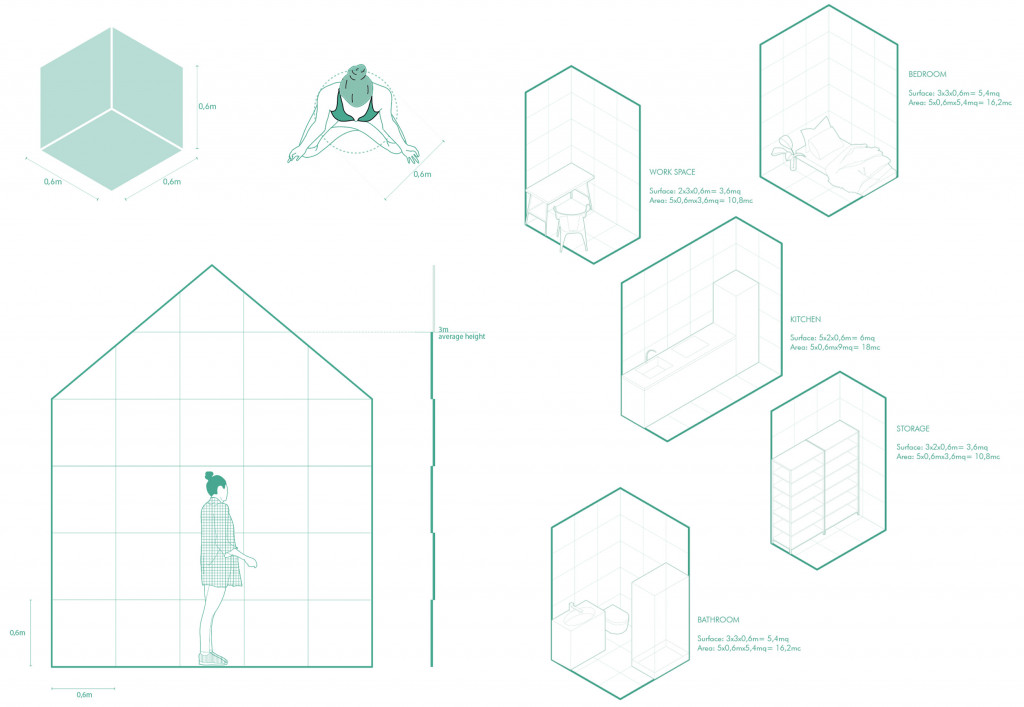
Ergonomics in a dwelling are essential because is within this single environment that people sleep, dine, relax, meditate, entertain, do housework, read, cook, bathe and work.
It is important to think about the moving space: especially in a confinement situation it is essential to keep the body and the mind comfortable with their surroundings.
Rethink the domestic space as transformed by individual ergonomics, the spaces, as basic functions, are designed with the minimum spaces’ requirements including clearances for a person to be comfortable.
Fluid boundaries / adaptive environment
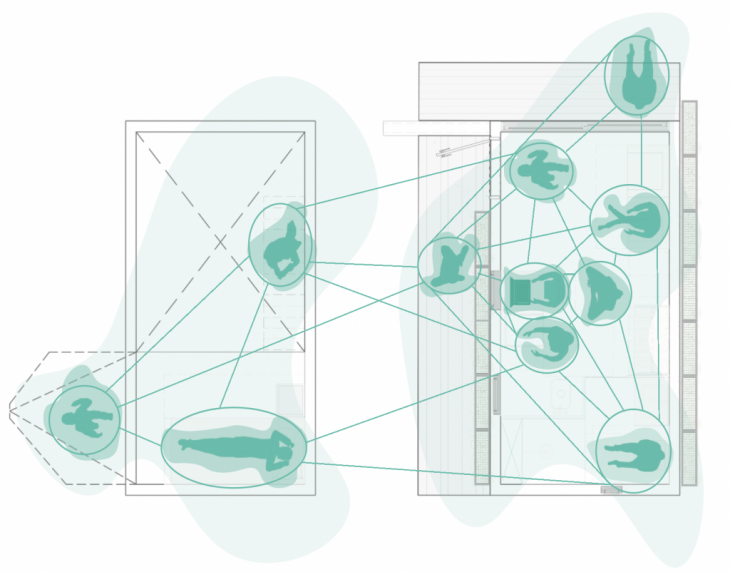
As a cell, able to adapt to different shapes and surfaces according to its needs, the envelope is thought as a living organism.
While the exterior membrane enables a greater interaction between the interior and the exterior, blurring the boundary between inside and outside, the interior has the ability to respond to physical and spatial needs of the individual.
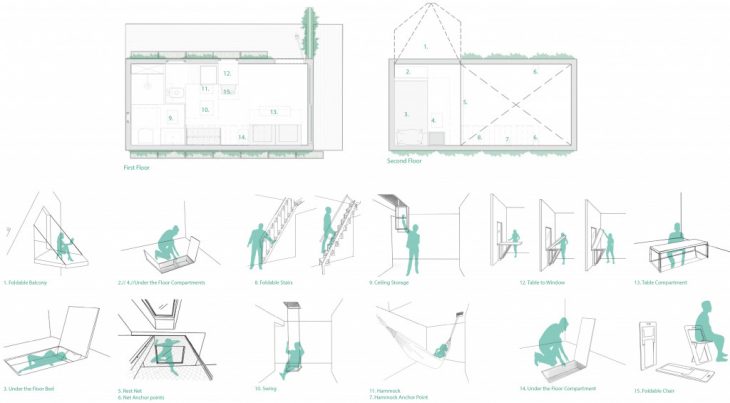
The goal is to adapt the domestic sphere to the user needs, and their constant evolution, giving the user a sense of empowerment over its own living system. In order to ensure a mentally comfortable space, the spatiality try to provoke a multitude of sensory experiences, dictated by changes of color, materiality, light, and allowing the landscape withing the interior.
Hidden furniture system creates an empty plan, and are only used when the user decided, allowing the user to wander around the space and be surprise by many corners, breaking the monotony. The space can adapt to different usages throughout the day and change accordingly to the external conditions, in order to create a direct connection with the environment, following biophilia principles.
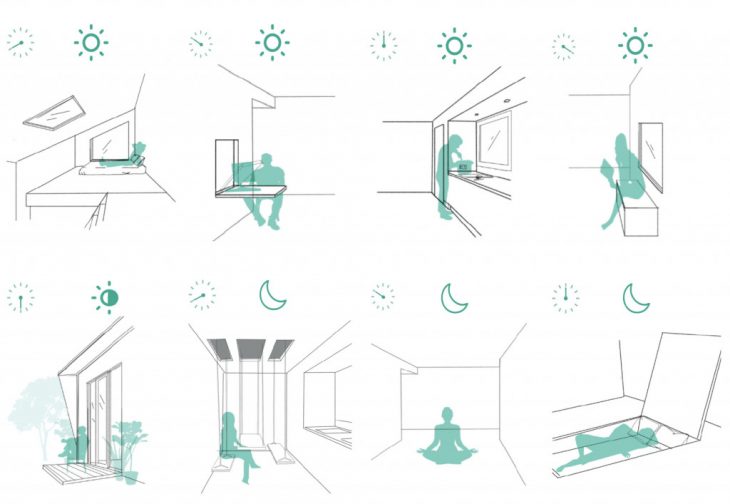
Thermodynamic / self-regulation
Metabolism / life-sustaining transformations
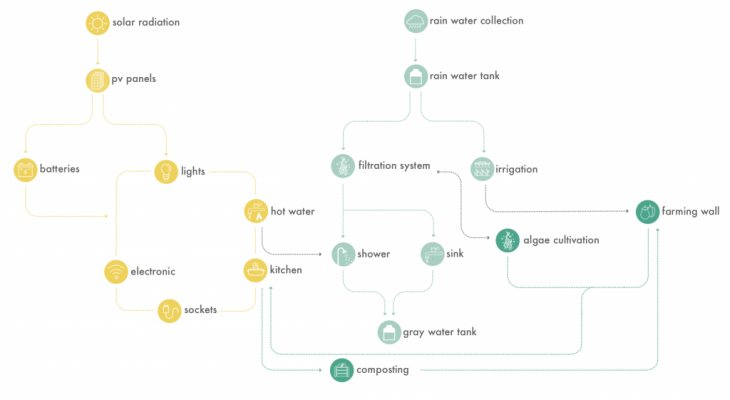
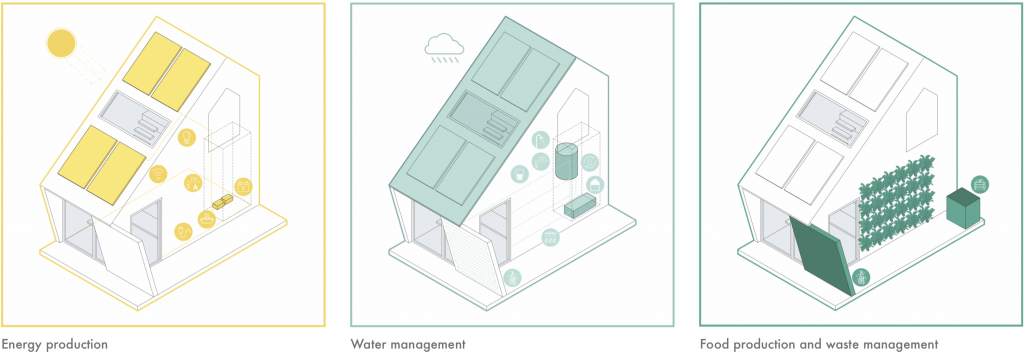
Students: Camila Fajardo, Giada Mirizzi
Faculty: Daniel Ibáñez, Vicente Guallart
